GoM Stakeholders Energized Despite Lingering Oil Bust
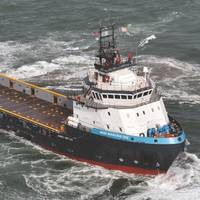
Gulf of Mexico vessel builders – and their customers – adapt to a lean offshore market. After oil prices plunged in late 2014 – pressured by shale output – demand for offshore vessels in the Gulf of Mexico shrank, day rates for boats fell and non-working units were idled. This year, several GoM boat builders filed for Chapter 11, or voluntary bankruptcy, while others consolidated. The most diversified companies kept their heads above water. Today, the outlook's a bit brighter. Crude oil prices hit bottom early last year. Tidewater Inc.
Maritime Security Demand Keeps US Builders Busy
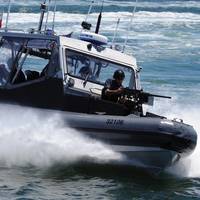
Export hulls – through the FMS Program, as well as Direct Sales – are a key piece of the business model. Even as the crash in energy prices feeds the oversupply of offshore support vessels – a key staple of U.S. boatbuilding diets – and the dwindling backlogs of some so-called ‘second tier’ yards, a number of U.S. boat builders are still seeing robust demand for security vessels. Separately, tightening federal, state, municipal and overseas budgets are being trumped by the increased need for security craft that can perform more than one function.
Offshore O&G: Weathering the Storm

Vessels are stacked as Gulf oil operators retrench and day rates fall. In the Gulf of Mexico, vessels serving offshore oil-and-gas exploration and production are being stacked or idled as the rig count there declines. Oil companies are retrenching while crude prices remain weak, with smaller operators and the shallow-water sector scaling back the most. As the situation unfolds, MarineNews asked David Barousse, general manager at Fleet Operators, Inc., a marine transportation firm in Morgan City, La., for his take on today’s predicament and what the future holds.
Marine News: Editor's Note
Our annual shipyard report comes at an appropriate, yet uncertain time for the industry. The future direction of the oil and gas markets will, to a large extent, also determine the course for domestic boat builders. That’s because the sustained rally seen in this sector over the course of the last 3 to 5 years came to be thanks to the so-called domestic energy boom. Nevertheless, there are reasons for optimism despite the lowest rig count since March of 2011. Thankfully, there are other reasons for shipyards to stay busy in the coming months. For example, the looming so-called subchapter M towboat rules will likely unleash a flurry of inland repair and newbuild activity.
Sequestration? What Sequestration?
Smaller boatyards carve out a profitable niche in this challenging, yet target rich maritime environment. For Kvichak and USMI; so far, so good. The May edition of MarineNews brought analysis of possible downstream consequences of the U.S. federal government’s ongoing austerity measures, especially where it could impact U.S. boatbuilders with backlogs tied to government funding. Susan Buchanan’s “Budget Battles Bumping Backlogs” piece brought out the good, bad and potentially ugly realities of the new normal in Washington, DC, where lawmakers tussle over spending priorities, while also leaving various casualties in their messy wake. The August announcement that the U.S.
MarineNews Editor's Note
Pop Quiz: Think back to the last time that U.S. Shipyards were operating at the breakneck pace now being seen from coast to coast. Now, think about that in context of slowing global demand brought on by overbuilt bluewater sectors. Next, factor in the breathtaking newbuild programs underway in the offshore support, inland marine and Jones Act sectors. And, don’t forget the increasing demand from foreign operators who, more and more, are beginning to understand that U.S. shipyards can build economically in series, for export and with quality that matches or exceeds global standards. Finally, plug in the shrinking trade deficit represented by energy that could eventually eliminate our dependency on foreign oil forever, powering prosperity that could last for a generation.
Editor's Note
Offshore energy is a unique animal. I say that because, increasingly, the vessels that provide offshore service are becoming the mainstream of our bluewater merchant marine. Smaller than their containership or tanker cousins – although getting bigger every day – these vessels pack surprising amounts of innovation and technology into every precious inch of their uniquely shaped hulls. As shipyards and operators alike discover that they can build to this scale in a way that competes with foreign yards, the U.S. flag fleet slowly becomes more modern and visible. Along with that comes the realization that this sector has special needs, responsibilities and rules; all of which impacts our ability to produce energy.
Push Is On To Declutter Gulf of Idle Iron
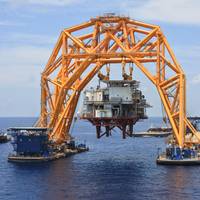
Nearly two years ago, the Obama Administration tightened rules for removing “idle iron” – old oil platforms and pipelines – and on plugging unused wells in the Gulf of Mexico. That September 2010 move was part of a federal crackdown on deepwater oil and gas operations following the 2010 BP spill. Since then, heavy-lift companies have continued to rid the Gulf of unused structures and other firms have positioned themselves for that work. Under the 2010 rules, wells that hadn't been used for five years were to be abandoned or “zonally isolated” within three years after Oct. 15, 2010.
Shipbuilders Rely On Training To Fill Crafts Jobs
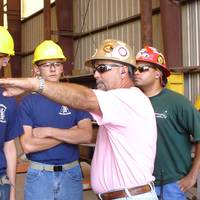
With skilled craftsmen in short supply in U.S. coastal areas, many shipbuilders turn to their own, sometimes extensive, internal training. Because fewer young people are entering shipbuilding out of high school, the industry is faced with an aging workforce that will soon have to be replaced. As good jobs for shipfitters and welders go begging, industry leaders say it's way past time to spread the word about these opportunities. Pascagoula, Miss.-based John Lotshaw directs Operations Workforce Training and Development at Huntington-Ingalls Industries (HII).
Industry Looks to RAMP Act to Meet Dredging Needs
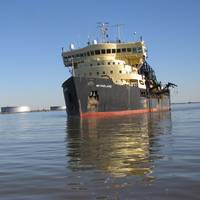
Silt accumulation and dredging that's been postponed for years have prevented the full use of U.S. waterways and ports, maritime industry leaders said last month. Hundreds of U.S. ports and harbors are meant to be maintained by the U.S. Army Corps of Engineers to foster navigation. But many of the country's channels are not kept at their authorized depths, and last year the backlog of needed dredging projects swelled. Meanwhile, just over half the fees charged to shippers through the federal Harbor Maintenance Trust Fund are spent on maintenance and operations…
Supplying Brazil's Booming OSV Market

Local equipment suppliers reap dividends, but there’s room for foreign businesses – if they know how to play. After huge oil finds in recent years, Brazil's need for offshore vessels continues to expand and could double between now and the end of the decade. Brazil's state-run oil company Petrobras wants to extract billions of barrels of oil while also developing its shipbuilding and service industries to create jobs. Meanwhile, Brazil is trying to use locally made vessels and equipment, but foreign companies are benefiting from the nation's oil bonanza too.
Demand for Offshore Vessels:
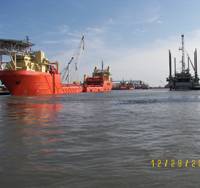
Growing In Deepwater Gulf of Mexico. As the feds issue more drilling permits for the Gulf, demand for offshore support vessels in the GOM deepwater sector has accelerated, industry members say. Anger about the government's spill-related, drilling moratorium--which ended a year and a half ago--has given way to optimism recently. The region's shallow-water sector, nevertheless remains slow and gives little cause for cheer. Paul Candies, president and chief executive of Otto Candies…
Higman Marine Grows:
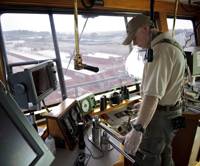
Innovation and New Building are Key Movers for this Gulf Coast Bulk Transportation Provider. Gordie Keenan, Higman's vice president of training told MarineNews in January, “We have 54 inland towboats, the majority of which are rated at 2,000 horse power, and 116 inland tank barges. Today our vessels are bigger with more horsepower, pushing more barrels, than ten years ago.” The company carries a myriad of crude oils and refined products for its clients on a fleet of barges and inland towboats that has doubled in number over the last ten years.
Build And Repair Work Accelerates

All U.S. Coasts enjoying upswing in business. For many U.S. builders, last year closed on a happier note than 2010 – when the BP spill, offshore drilling ban and weak U.S. and global economies hurt business. In 2011, new orders for vessels for the oil industry and for the U.S. and foreign governments promised to keep a number of builders busy in 2012. A need to comply with new federal regulations created work, and repair activity grew. The upshot is that coastal economies are getting a needed boost. But some companies find themselves with more customers than they can immediately handle.
The Center(s) of Expertise

U.S. Coast Guard's Safety Strategy Incorporates Tightly Focused Training at Carefully Chosen Venues. The U.S. Coast Guard opened seven National Centers of Expertise in 2009, locating three alone on the busy Gulf Coast, The concept of national centers of expertise – or “centers of excellence” – dates back to the 1960s when technology became more advanced and required new skill sets. The U.S. Army, Navy, Air Force and Marine Corps all operate such hubs, as do federal agencies, foreign governments and industries ranging from manufacturing to health care.
Gulf Firms Moving Cargo, Staff To Distant Rigs

More than a decade ago, deepwater oil production in the Gulf of Mexico surpassed shallow water output for the first time ever. These days, rigs are found hundreds of miles offshore. Companies need to get equipment, employees, fuel and mud to those sites economically and usually on a tight schedule. Gulf marine companies are trying to meet those requirements by increasing the speed, size and energy efficiency of their vessels--though not necessarily all at once. Shane Guidry, Chief Executive Officer of Harvey Gulf International Marine…
Offshore Vessel Operators Suffer As Gulf Oil Output Sags

As seen in the August edition of MarineNews, Susan Buchanan updates readers on the GOM oil production situation. BP's gushing well was capped more than a year ago but life is hardly back to normal in the U.S. Gulf--where rigs and vessels remain underutilized. At least ten rigs have moved overseas since last summer. Gulf oil production is below pre-spill levels and won't recover anytime soon, analysts say. Issuance of drilling permits picked up this spring as operators agreed to use oil-containment systems but permitting lags earlier rates.
Diversification Keeps Gulf Vessel Builders Afloat
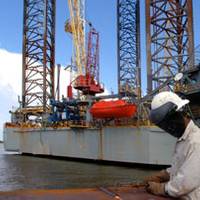
Companies building vessels on the U.S. Gulf are servicing a flock of domestic and overseas clients while their offshore oil and gas customers wait for Washington to issue more drilling permits and safety rules. Some of the region's builders are busy making repairs. After a federal ban on deepwater drilling ended in October — three months after BP's well was capped — the Gulf remains quiet, but industry members expect business to improve eventually. Gulf vessel builders have seemingly ignored an old sailors' warning to “never plant you right and left feet in two different boats.” Instead…
Gulf Oil Spill: Ships Face Few Delays

As oil from BP's sub-sea well laps coastal Louisiana, most ships in the Gulf have avoided contact with the spill but owners fear that regulations will be tightened after the disaster, raising their costs. “We've seen no delays from the spill, and it hasn't affected the operations of any of our ships,” said Dean Taylor, president of Tidewater Inc. in late May. Four vessels owned by Tidewater, which is headquartered in New Orleans, have been involved in recovery efforts. The company's work boat Damon B.
Offshore Update: Waiting on Feds to Issue Permits
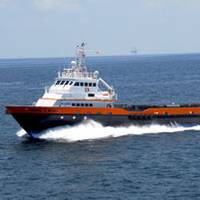
Marine companies along the Gulf of Mexico have seen little new business since the offshore drilling moratorium was lifted in early October as oil producers apply for permits and decide how to navigate costly safety regulations. At Bollinger Shipyards, Inc., one of the top U.S. boat builders, Chief Executive Officer Boysie Bollinger, said “we're waiting for BOEM to start issuing offshore drilling permits, and no one has any idea when that will be.” He wonders if the government knows when more permits will be released.









